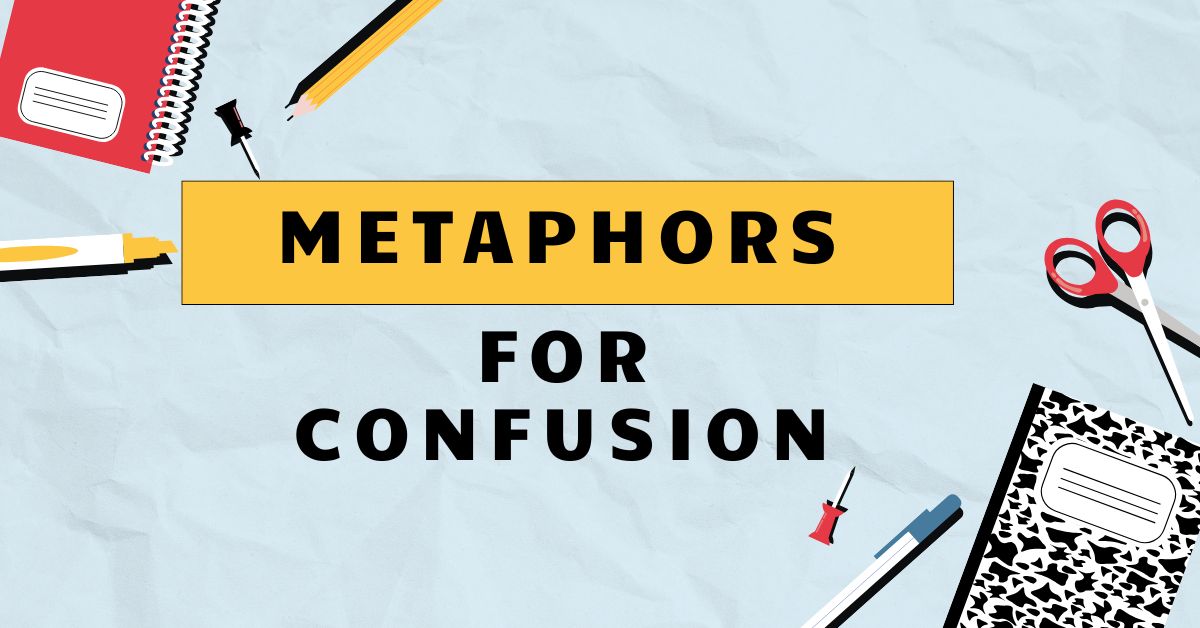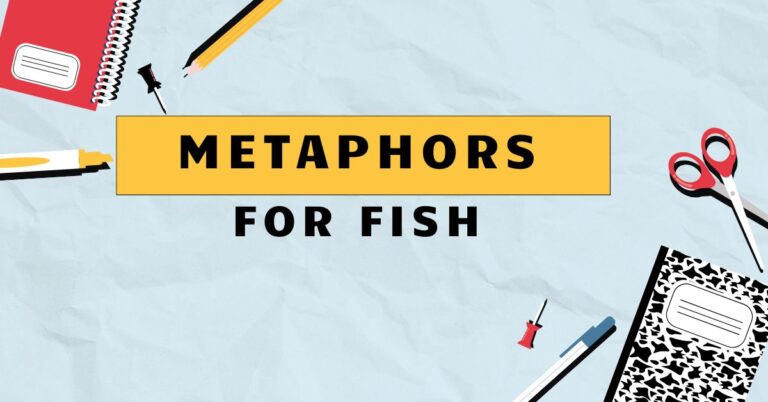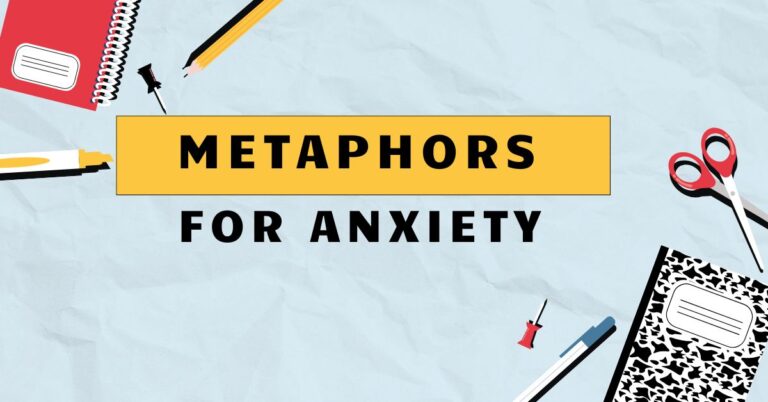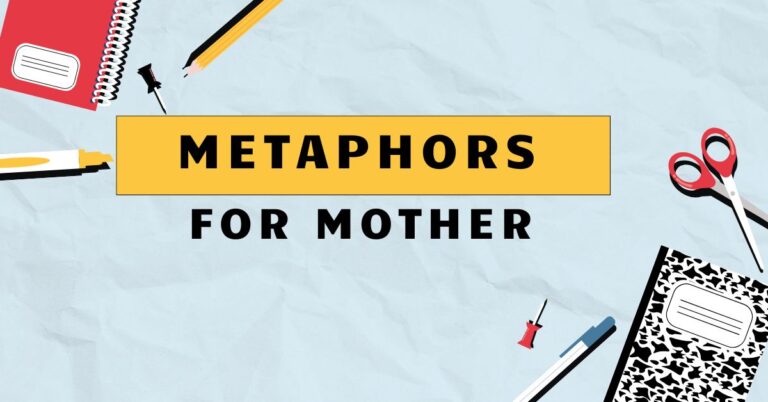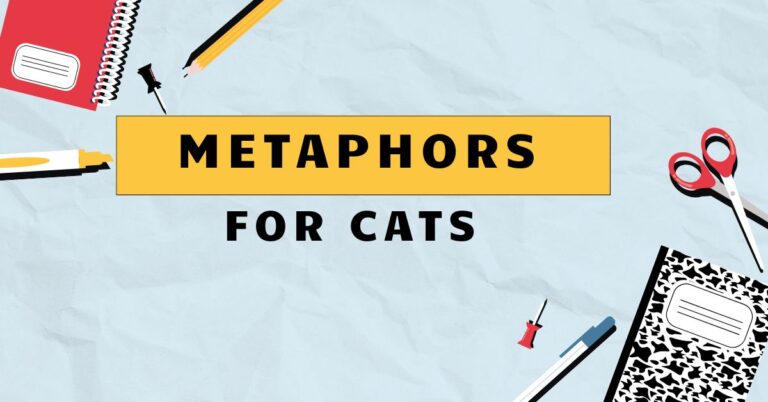33 Metaphors for Confusion: A Comprehensive Guide
Confusion is a universal human experience, and language provides us with countless ways to express it. Metaphors, in particular, offer a vivid and relatable means of describing the feeling of being bewildered, perplexed, or uncertain.
Understanding these metaphors not only enriches our comprehension of the English language but also enhances our ability to articulate our own experiences and interpret the expressions of others. This guide explores the various metaphors used to convey confusion, their structures, and their proper usage, equipping you with the tools to navigate this complex linguistic landscape.
This guide will benefit English language learners, writers, and anyone interested in the nuances of metaphorical language.
Table of Contents
- Definition of Metaphors for Confusion
- Structural Breakdown of Confusion Metaphors
- Types and Categories of Confusion Metaphors
- Examples of Metaphors for Confusion
- Usage Rules for Metaphors of Confusion
- Common Mistakes with Confusion Metaphors
- Practice Exercises
- Advanced Topics in Confusion Metaphors
- Frequently Asked Questions
- Conclusion
Definition of Metaphors for Confusion
A metaphor is a figure of speech that directly compares two seemingly unrelated things, highlighting a shared quality or characteristic. Metaphors for confusion specifically use this comparison to describe the state of being unclear, uncertain, or perplexed.
Unlike similes, which use words like “like” or “as” to make a comparison, metaphors directly equate one thing to another. The function of these metaphors is to provide a more evocative and relatable way to express the often intangible feeling of confusion.
They provide a shorthand for communicating a complex state of mind, allowing for richer and more nuanced expression. The contexts in which these metaphors are used are broad, ranging from everyday conversations to literature, academic writing, and technical explanations.
Metaphors for confusion tap into our shared experiences and perceptions, drawing on concepts like physical disorientation, visual obscurity, and mental blockage to convey the feeling of being lost or uncertain. By understanding the underlying comparisons, we can better grasp the intended meaning and appreciate the creative power of language.
Structural Breakdown of Confusion Metaphors
The structure of a metaphor for confusion typically involves two key elements: thetenorand thevehicle. The tenor is the subject being described (in this case, the feeling of confusion), and the vehicle is the concept used to represent that feeling.
The effectiveness of a metaphor depends on the relationship between the tenor and the vehicle and how well the chosen vehicle resonates with the intended audience.
For instance, in the metaphor “I’m lost in a fog,” the tenor is the speaker’s feeling of confusion, and the vehicle is “fog.” The metaphor works because fog is associated with obscurity, disorientation, and an inability to see clearly, all of which are qualities that align with the experience of confusion. Understanding this structural relationship helps us deconstruct and interpret metaphors more effectively.
Another important aspect of metaphor structure is theground, which refers to the shared characteristics between the tenor and the vehicle that make the comparison meaningful. In the “lost in a fog” example, the ground includes concepts like obscurity, disorientation, and lack of clarity.
Identifying the ground is crucial for fully understanding the intended meaning of the metaphor.
Types and Categories of Confusion Metaphors
Metaphors for confusion can be categorized based on the conceptual domains they draw upon. Here are some common categories:
Spatial Metaphors
Spatial metaphors relate confusion to physical location and movement. They often involve being lost, disoriented, or unable to find one’s way.
Visual Metaphors
Visual metaphors compare confusion to a lack of clarity or impaired vision, such as being blinded, seeing through a haze, or being in the dark.
Physical Metaphors
Physical metaphors describe confusion in terms of physical sensations, such as feeling overwhelmed, burdened, or tied up.
Directional Metaphors
Directional metaphors use concepts of up, down, forward, and backward to describe the state of confusion, often implying a lack of progress or a sense of being turned around.
Container Metaphors
Container metaphors depict the mind as a container filled with jumbled or disorganized contents, leading to confusion. Examples include “my head is swimming” or “my brain is overflowing”.
Examples of Metaphors for Confusion
Here are some organized examples of metaphors for confusion, categorized by type:
Table 1: Spatial Metaphors for Confusion
This table illustrates how spatial concepts can be used metaphorically to describe the feeling of being confused or disoriented. The examples highlight the sense of being lost or unable to navigate a situation.
| Metaphor | Explanation |
|---|---|
| I’m lost in the woods. | Feeling completely disoriented and unable to find a clear path. |
| I’m adrift at sea. | Feeling without direction or purpose, like a ship without a rudder. |
| I’m in a maze. | Feeling trapped in a complex situation with no clear exit. |
| I’m wandering in the dark. | Feeling uncertain and without guidance. |
| I’m off track. | Feeling that you are no longer following the correct path or plan. |
| I’m going around in circles. | Feeling stuck and unable to make progress. |
| I’ve lost my bearings. | Feeling disoriented and unsure of where you are or what to do. |
| I’m in uncharted territory. | Feeling that you are in an unfamiliar and potentially dangerous situation. |
| I’m in a fog. | Feeling mentally unclear and disoriented. |
| I’m caught in a whirlwind. | Feeling overwhelmed and disoriented by a fast-paced or chaotic situation. |
| I’m stuck in quicksand. | Feeling trapped and unable to escape a difficult situation. |
| I’m in a labyrinth. | Similar to being in a maze, but often more intricate and complex. |
| I’m navigating a minefield. | Feeling that you must proceed with extreme caution to avoid making a mistake. |
| I’m lost in translation. | Feeling unable to understand or communicate effectively. |
| I’m on a wild goose chase. | Feeling that you are pursuing something pointless or unattainable. |
| I’m in the weeds. | Feeling lost in the details and unable to see the bigger picture. |
| I’m in a blind alley. | Feeling that you have reached a dead end with no further options. |
| I’m at a crossroads. | Feeling that you must make a difficult decision with uncertain consequences. |
| I’m treading water. | Feeling that you are struggling to stay afloat and making no progress. |
| I’ve hit a wall. | Feeling that you have encountered an insurmountable obstacle. |
| I’m in deep water. | Feeling that you are in a difficult or dangerous situation. |
Table 2: Visual Metaphors for Confusion
This table provides examples of how visual impairments or lack of clarity can be used as metaphors to describe mental confusion. The metaphors highlight the difficulty in seeing clearly or understanding a situation.
| Metaphor | Explanation |
|---|---|
| I’m seeing double. | Feeling disoriented and unable to perceive things accurately. |
| It’s all a blur. | Feeling that everything is indistinct and difficult to understand. |
| I can’t see the forest for the trees. | Being so focused on details that you miss the overall picture. |
| I’m in the dark. | Lacking knowledge or understanding about something. |
| It’s as clear as mud. | Being completely unclear and difficult to understand. |
| I’m blinded by the light. | Feeling overwhelmed and unable to think clearly due to too much information or stimulation. |
| It’s all Greek to me. | Being completely unable to understand something. |
| I’m looking through a glass darkly. | Having a distorted or incomplete understanding of something. |
| I’m lost in a haze. | Feeling mentally unclear and disoriented. |
| The picture is fuzzy. | Feeling that the details are unclear and difficult to discern. |
| I’m seeing things through rose-colored glasses. | Having an unrealistically optimistic view that obscures the truth. |
| I’m in a fog of war. | Feeling disoriented and uncertain in a chaotic and complex situation. |
| My vision is clouded. | Feeling that your understanding is obscured by emotions or biases. |
| I can’t make heads or tails of it. | Being completely unable to understand something. |
| It’s a jumbled mess. | Feeling that something is disorganized and confusing. |
| I’m lost in the shadows. | Feeling uncertain and lacking clear guidance. |
| I’m squinting to see the truth. | Struggling to understand or discern the truth in a confusing situation. |
| The details are murky. | Feeling that the details are unclear and difficult to understand. |
| I’m trying to find clarity in the chaos. | Struggling to understand or find meaning in a confusing situation. |
| I’m piecing together a fragmented picture. | Trying to understand something by gathering and connecting incomplete information. |
| I’m searching for a signal in the noise. | Trying to find meaningful information amidst distractions and confusion. |
Table 3: Physical Metaphors for Confusion
This table illustrates how physical sensations can be used metaphorically to describe the feeling of being confused or overwhelmed. The examples highlight the physical impact of mental confusion.
| Metaphor | Explanation |
|---|---|
| My head is spinning. | Feeling dizzy and disoriented due to confusion. |
| My brain is fried. | Feeling mentally exhausted and unable to think clearly. |
| I’m pulling my hair out. | Feeling extremely frustrated and stressed due to confusion. |
| I’m banging my head against a wall. | Feeling frustrated and unable to make progress on a problem. |
| I’m at my wit’s end. | Feeling that you have exhausted all your mental resources and can’t think of a solution. |
| I’m drowning in information. | Feeling overwhelmed by too much information. |
| I’m paralyzed with confusion. | Feeling unable to act or make a decision due to confusion. |
| I’m hitting a brick wall. | Feeling that you have encountered an insurmountable obstacle. |
| I’m running in circles. | Feeling that you are making no progress and repeating the same actions. |
| I’m grasping at straws. | Trying desperate and unlikely solutions to a problem. |
| I’m feeling numb. | Feeling emotionally and mentally disconnected due to confusion. |
| I’m losing my grip. | Feeling that you are losing control or understanding of the situation. |
| I’m feeling like a deer in headlights. | Feeling frozen and unable to react due to confusion or fear. |
| I’m climbing a mountain of confusion. | Feeling that you are facing a difficult and overwhelming challenge. |
| I’m stumbling in the dark. | Feeling uncertain and making mistakes due to lack of information. |
| I’m weighed down by confusion. | Feeling burdened and unable to think clearly due to confusion. |
| I’m tied up in knots. | Feeling tangled and unable to think clearly due to confusion. |
| I’m spinning out of control. | Feeling that you are losing control of the situation due to confusion. |
| I’m feeling the weight of the world on my shoulders. | Feeling overwhelmed by responsibilities and confusion. |
| I’m walking on eggshells. | Feeling that you must be extremely careful to avoid making a mistake or causing offense. |
| I’m treading on thin ice. | Feeling that you are in a precarious or dangerous situation. |
Table 4: Directional Metaphors for Confusion
This table provides examples of how directional concepts can be used metaphorically to describe confusion. These metaphors often suggest a lack of progress or a sense of being disoriented.
| Metaphor | Explanation |
|---|---|
| I’m going nowhere fast. | Feeling that you are putting in effort but making no progress. |
| I’m headed in the wrong direction. | Feeling that you are pursuing a course of action that will not lead to the desired outcome. |
| I’m taking two steps forward, one step back. | Making slow and inconsistent progress with frequent setbacks. |
| I’m going off on a tangent. | Deviating from the main topic or plan. |
| I’m backtracking. | Reversing course or retracing your steps. |
| I’m at a standstill. | Making no progress at all. |
| I’m moving backwards. | Losing ground or regressing. |
| I’m getting sidetracked. | Being distracted from the main goal or task. |
| I’m going down the wrong path. | Pursuing a course of action that will lead to negative consequences. |
| I’m spiraling downwards. | Experiencing a rapid decline in understanding or control. |
| I’m going against the grain. | Acting in opposition to the prevailing norms or expectations. |
| I’m off course. | Deviating from the planned route or direction. |
| I’m getting nowhere. | Making no progress despite effort. |
| I’m chasing my tail. | Engaging in pointless or unproductive activity. |
| I’m going uphill. | Facing a difficult and challenging situation. |
| I’m losing ground. | Falling behind or losing progress. |
| I’m on the wrong track. | Pursuing a mistaken or incorrect course of action. |
| I’m running into obstacles. | Encountering difficulties and challenges. |
| I’m going in circles. | Repeating the same actions without making progress. |
| I’m getting turned around. | Feeling disoriented and confused. |
Table 5: Container Metaphors for Confusion
This table illustrates how the concept of containers can be used metaphorically to describe confusion. These metaphors often depict the mind as a container filled with disorganized or overwhelming contents.
| Metaphor | Explanation |
|---|---|
| My head is full of ideas. | Feeling overwhelmed by a multitude of thoughts and concepts. |
| My brain is overflowing. | Feeling that you have too much information to process. |
| My mind is a jumbled mess. | Feeling that your thoughts are disorganized and chaotic. |
| My head is swimming. | Feeling dizzy and disoriented due to confusion. |
| My thoughts are all mixed up. | Feeling that your ideas are confused and disorganized. |
| I’m drowning in information. | Feeling overwhelmed by a large amount of data. |
| My mind is cluttered. | Feeling that your thoughts are disorganized and distracting. |
| I’m lost in my own thoughts. | Feeling disconnected from reality due to intense thinking. |
| My brain is a pressure cooker. | Feeling that you are under intense mental stress. |
| My head is a beehive. | Feeling that your thoughts are buzzing and chaotic. |
| I’m trapped in my own mind. | Feeling unable to escape from negative or confusing thoughts. |
| My mind is a blank slate. | Feeling unable to think or remember anything. |
| I’m sinking into confusion. | Feeling increasingly overwhelmed by confusion. |
| My mind is a tangled web. | Feeling that your thoughts are complex and difficult to unravel. |
| I’m buried under a pile of confusion. | Feeling overwhelmed by a large amount of confusing information. |
| My thoughts are scattered. | Feeling that your ideas are fragmented and difficult to focus on. |
| My mind is a black hole. | Feeling that your thoughts are disappearing or being consumed by confusion. |
| I’m lost in a sea of information. | Feeling overwhelmed by a large amount of data. |
| My head is in the clouds. | Feeling disconnected from reality and lost in daydreams. |
| My mind is a maze. | Feeling that your thoughts are complex and difficult to navigate. |
Usage Rules for Metaphors of Confusion
Using metaphors effectively requires attention to several key rules:
- Clarity: The metaphor should be readily understandable to the audience. Avoid obscure or overly complex comparisons.
- Relevance: The vehicle should have a clear and logical connection to the tenor. The shared characteristics should be apparent.
- Originality: While common metaphors can be effective, strive for originality to make your writing more engaging and memorable.
- Consistency: Avoid mixing metaphors within the same context, as this can create confusion and undermine the intended meaning. For example, don’t say “I’m lost in the woods, but I can see the light at the end of the tunnel” because it combines two different metaphors of spatial and visual confusion.
- Context: Consider the context in which the metaphor is used. A metaphor that works well in one situation may be inappropriate in another.
Exceptions and Special Cases:
While consistency is generally important, skilled writers can sometimes use mixed metaphors deliberately for humorous or stylistic effect. However, this should be done with caution and only when the intended meaning is clear.
Also, cultural context can affect how metaphors are understood. What is a clear metaphor in one culture might be confusing in another.
Common Mistakes with Confusion Metaphors
One common mistake is using clichéd or overused metaphors. While these may be easily understood, they lack originality and can make your writing seem uninspired.
Instead of saying “I’m in the dark,” try a more creative alternative like “I’m navigating through a dense fog of uncertainty.”
Another mistake is mixing metaphors, as mentioned earlier. This can create nonsensical or contradictory images.
Consider the following examples:
Incorrect: “I’m drowning in paperwork, but I’m also sailing smoothly through it.” (Mixing the metaphors of drowning and sailing)
Correct: “I’m drowning in paperwork.” (Focusing on the metaphor of being overwhelmed)
Correct: “I’m sailing smoothly through the paperwork.” (Focusing on the metaphor of easy progress)
Another common error is using metaphors that are too abstract or complex for the intended audience. The goal is to enhance understanding, not to create further confusion.
Ensure that the vehicle is relatable and that the connection to the tenor is clear.
Practice Exercises
Exercise 1: Identifying Metaphors for Confusion
Identify the metaphors for confusion in the following sentences:
| Question | Answer |
|---|---|
| 1. I’m lost in a sea of paperwork. | lost in a sea |
| 2. The instructions were as clear as mud. | as clear as mud |
| 3. My head is spinning after that lecture. | head is spinning |
| 4. I’m banging my head against a brick wall trying to solve this problem. | banging my head against a brick wall |
| 5. He’s wandering in the dark, trying to find a solution. | wandering in the dark |
| 6. She’s drowning in details and can’t see the big picture. | drowning in details |
| 7. I’m off track and need to re-evaluate my approach. | off track |
| 8. He’s caught in a whirlwind of conflicting information. | caught in a whirlwind |
| 9. I’m trying to navigate a labyrinth of regulations. | navigate a labyrinth |
| 10. She’s at her wit’s end trying to understand the code. | at her wit’s end |
Exercise 2: Creating Metaphors for Confusion
Create your own metaphors for confusion based on the following prompts:
| Prompt | Example Answer |
|---|---|
| 1. Describe the feeling of being overwhelmed by a complex task. | I’m climbing Mount Impossibility, and the summit is hidden in the clouds. |
| 2. Describe the feeling of not understanding a concept. | It’s all written in a language I’ve never learned. |
| 3. Describe the feeling of being disoriented in a new place. | I’m a compass with a broken needle, spinning wildly. |
| 4. Describe the feeling of having too much information to process. | My brain is an overstuffed suitcase about to burst at the seams. |
| 5. Describe the feeling of being stuck on a problem. | I’m trapped in a mental quicksand, the harder I struggle, the deeper I sink. |
| 6. Describe the feeling of being uncertain about the future. | The road ahead is shrouded in mist, and I can’t see where I’m going. |
| 7. Describe the feeling of being lost in a conversation. | They’re speaking a code I can’t crack. |
| 8. Describe the feeling of being mentally exhausted. | My brain is a drained battery, flickering with a dying light. |
| 9. Describe the feeling of not being able to concentrate. | My thoughts are butterflies, flitting from flower to flower. |
| 10. Describe the feeling of being confused by conflicting information. | I’m caught in a crossfire of opinions, unsure which way to turn. |
Exercise 3: Correcting Mixed Metaphors
Rewrite the following sentences to correct the mixed metaphors:
| Question | Answer |
|---|---|
| 1. I’m drowning in paperwork, but I can see the light at the end of the tunnel. | I’m drowning in paperwork. |
| 2. He’s climbing the ladder of success, but he’s also lost in the woods. | He’s lost in the woods when it comes to his career path. |
| 3. She’s navigating a minefield while simultaneously sailing smoothly through the project. | She’s navigating a minefield of challenges in this project. |
| 4. I’m hitting a brick wall, but I’m also on the right track. | I’m hitting a brick wall with this project. |
| 5. He’s lost in a fog, but he’s also grasping at straws. | He’s lost in a fog of uncertainty. |
| 6. She’s running in circles but also seeing the forest for the trees. | She’s running in circles trying to solve the problem. |
| 7. The project is a tangled web, but it’s also smooth sailing. | The project is a tangled web of complexities. |
| 8. I’m at my wit’s end, but I’m also climbing a mountain. | I’m at my wit’s end trying to solve this puzzle. |
| 9. He’s in deep water, but he’s also on solid ground. | He’s in deep water financially. |
| 10. She’s caught in a whirlwind, but she’s also keeping her head above water. | She’s caught in a whirlwind of activity. |
Advanced Topics in Confusion Metaphors
At an advanced level, the study of metaphors for confusion can delve into cognitive linguistics, exploring how these metaphors reflect underlying conceptual structures in the mind. This involves examining how our understanding of abstract concepts like confusion is grounded in our physical experiences.
For example, the prevalence of spatial metaphors for confusion suggests that we conceptualize mental states in terms of physical space and movement.
Another advanced topic is the use of extended metaphors, where a single metaphor is developed and elaborated throughout a text. This can create a powerful and cohesive effect, but it requires careful planning and execution.
For example, a writer might use the metaphor of a maze to describe the complexities of a political system, exploring different aspects of the system in terms of the maze’s structure, pathways, and dead ends.
Furthermore, studying the evolution of metaphors for confusion across different historical periods and cultures can provide insights into changing attitudes and beliefs about mental states. This involves analyzing literary texts, philosophical writings, and other cultural artifacts to trace the development and transformation of these metaphors over time.
Frequently Asked Questions
- What is the difference between a metaphor and a simile?A metaphor directly equates two things, while a simile uses “like” or “as” to make a comparison. For example, “He is a lion” (metaphor) vs. “He is like a lion” (simile).
- Why are metaphors important in language?Metaphors allow us to understand and express abstract concepts in more concrete and relatable ways. They also add richness, depth, and creativity to language.
- How can I improve my use of metaphors?Read widely, pay attention to the metaphors used by others, and practice creating your own. Experiment with different types of metaphors and consider the context in which they are used.
- What is a mixed metaphor, and why is it a problem?A mixed metaphor combines two or more inconsistent metaphors, creating a nonsensical or contradictory image. This can undermine the clarity and effectiveness of your writing.
- Are some metaphors better than others?Yes. Effective metaphors are clear, relevant, original, and consistent with the context. Overused or clichéd metaphors can be less impactful.
- How do cultural differences affect the interpretation of metaphors?Metaphors are often based on shared cultural experiences and knowledge. A metaphor that is readily understood in one culture may be confusing or meaningless in another.
- Can metaphors be used in technical writing?Yes, but they should be used sparingly and with caution. The goal is to enhance understanding, not to create confusion. Ensure that the metaphor is clear, relevant, and appropriate for the audience.
- How can I identify the tenor and vehicle in a metaphor?The tenor is the subject being described, and the vehicle is the concept used to represent that subject. Look for the two things being compared and identify which one is being used to describe the other.
- What is the “ground” of a metaphor?The ground refers to the shared characteristics between the tenor and the vehicle that make the comparison meaningful. Identifying the ground is crucial for fully understanding the intended meaning of the metaphor.
- How can I avoid using clichéd metaphors?Strive for originality by exploring different perspectives and finding fresh ways to express familiar concepts. Consider using more specific and concrete imagery.
- How can I use metaphors to make my writing more persuasive?Choose metaphors that resonate with your audience’s values and beliefs. Use vivid and evocative language to create a strong emotional connection.
- Are metaphors only useful in creative writing?No, metaphors can be useful in many different contexts, including business, education, and science. They can help to explain complex ideas, engage audiences, and promote understanding.
Conclusion
Metaphors for confusion provide a powerful and versatile tool for expressing the often complex and intangible experience of being bewildered or uncertain. By understanding the different types of metaphors, their structures, and their proper usage, we can enhance our communication skills and gain a deeper appreciation for the creative potential of language.
Remember to prioritize clarity, relevance, and originality when crafting your own metaphors, and be mindful of the potential for misinterpretation. Learning to effectively use metaphors for confusion can significantly improve both clarity and impact in your writing and speaking.
Continue to explore and experiment with different metaphors to refine your skills and develop your unique voice. Pay attention to how others use metaphors and analyze their effectiveness.
With practice and attention to detail, you can master the art of using metaphors to convey the feeling of confusion in a vivid and compelling way. Happy writing!

